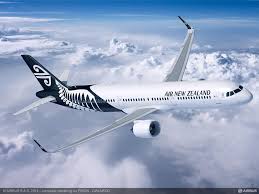Air New Zealand ventures into 3D printing of metal aircrafts. The company has been collaborating with Zenith Technica to evaluate to what extent it can manufacture 3D printed metal parts for aircrafts and tools.
Zenith Technica’s expertise relies in the design and fabrication of 3D printed titanium and other metals using electron beam melting (EBM). For its first experience the airline company is really pleased to collaborate with a local operator, very accessible in terms of services and distance. Air New Zealand also benefits from the service of GE Additive to learn new things in this environment.
Anyway, during the initial phases of their collaboration, the team has printed prototype metal framing for Air New Zealand’s Business Premier cabin, in order to test new concepts and ideas. Furthermore, they have also manufactured new wine aerators.
It should be noted that, these first stages also demonstrate the strength, versality and potential of titanium, a very coveted material in 3D printing of parts for aircraft applications. (Read the April issue of 3D Adept Mag to discover the advantages and the limitations of this material – Page 16) .
“Aircraft interiors are made up of tens of thousands of parts, and the ability to 3D print on demand lightweight parts we only require a small number of, rather than rely on traditional manufacturing methods is of huge benefit to our business, without compromising safety, strength or durability.”
A way to accelerate local adoption of 3D printing for aviation
This collaboration between two companies of the same country does not only strengthen the economy of the country but also foster the adoption of 3D printing in this sector.
However, note that “Air New Zealand first began its foray into the area of 3D printing in 2016 and has now moved into items like improved small parts for IFE screens which save cost and time, as well as working with new partners such as ST Engineering Aerospace on more advanced parts. The airline is also exploring the boundaries of new processes with Auckland University, Victoria University of Wellington and other technology companies. Most recently it has been using a 3D laser scanner for creating parts’ designs, tool designs and interior modelling.”
For further information, follow us on our social media and subscribe to our newsletter!
Would you like to be featured in the next issue of our digital magazine? Send us an email at contact@3dadept.com






